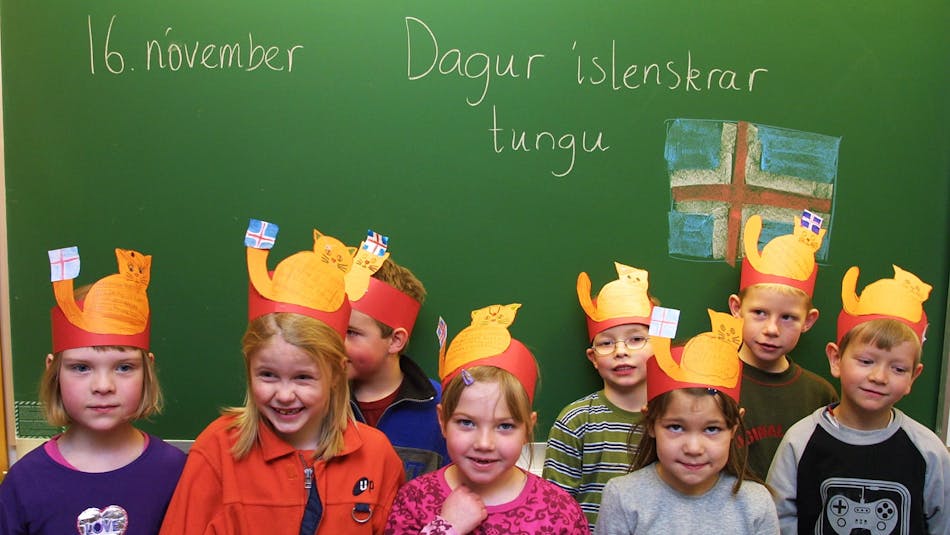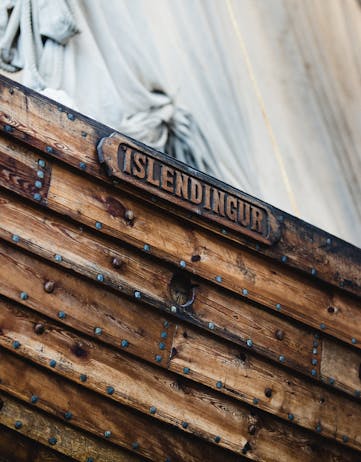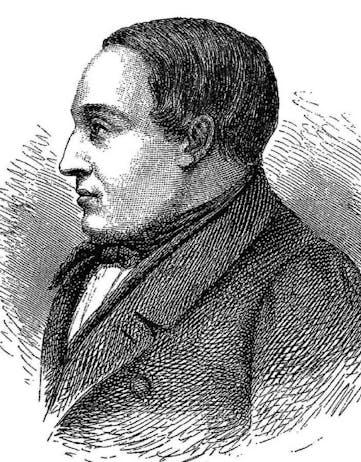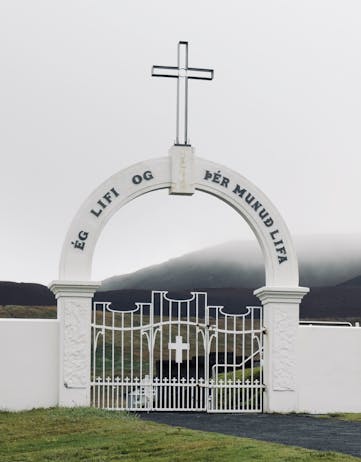
Icelandic children celebrating Icelandic Language Day or, as they say in Icelandic, Dagur íslenskrar tungu.
A Day of Preservation and Pride
Amid the digital age, where languages intertwine and cultures merge, Icelandic Language Day stands out as a testament to the power of linguistic preservation. Icelandic Language Day, or "Dagur íslenskrar tungu," is an ideal example of Iceland's commitment to preserving one of the world's official languages with the fewest speakers. Held annually on November 16, this special day is dedicated to celebrating—and promoting—the Icelandic language, ensuring its survival in a world dominated by fewer and fewer global languages.
Origin story: A national hero with a pen
Icelandic Language Day was first celebrated in 1996 to coincide with the birthday of Jónas Hallgrímsson (1807-1845), a revered 19th-century poet and naturalist known for his deep curiosity about the world. Hallgrímsson played a pivotal role in fostering Icelandic identity and culture at a time when Danish influence was immense and almost snuffed out Icelandic. By dedicating this day to his memory, Iceland honors Hallgrímsson's contributions and underscores the intrinsic link between language and national heritage. Thanks to Hallgrímsson and the efforts of many in Iceland, there are more Icelandic speakers today than ever before.
The cornerstone of Icelandic identity
Icelanders take a lot of pride in their language—with good reason. In many ways, Icelandic is a linguistic island, just like its geography. For centuries, it was left in isolation with little outside linguistic influence. Most travelers who visit Iceland will hear from a guide (or local) that, "We still speak the language of the Vikings, and we can still read the text of the old Sagas." With the usual addition that the Norwegians and Danes cannot do this! Indeed, Icelandic is a Germanic language with roots in Old Norse and related to Western Norwegian dialects and Faroese. While many languages evolve or succumb to external influences, Icelandic has remained remarkably pure, preserving its ancestors' linguistic syntax, vocabulary, and ancient aphorisms that still work today. This is readily apparent with the onslaught of new technological terms. While many languages will often adopt the English variant of the word (computer is often an example here), Icelanders will conceive of new words. In fact, there is a National Language Planning Department at the Árni Magnússon Institute for Icelandic Studies. This preservation is no accident, but the concerted efforts by government initiatives—and its people—to maintain their linguistic identity. The language serves as a living connection to Iceland's rich history, literature, and folklore. Language Day is an annual reminder that this connection remains strong and vibrant.
The celebrations
Icelandic Language Day is marked by many activities promoting the language to engage speakers, increase awareness, and have fun. Grade schools through universities play a significant role during the day, hosting lectures, workshops, and competitions encouraging the young and old to connect with their linguistic roots.
The Icelandic Eddas, sagas, and poetry are unique in the day's celebrations, with readings and recitations taking center stage. This homage to poetry not only honors Hallgrímsson's legacy as a poet but also celebrates Iceland's tremendous oral and written sagas, full of beauty and the expressiveness of the Icelandic language, and with plenty of vengeance, action, and adventure!
Modern-day media channels also play a vital role, with television, social media, and radio stations broadcasting diverse programs in Icelandic and newspapers featuring articles about the language and its significance. These efforts ensure that the celebration of Language Day extends beyond the classroom and into the homes of every Icelander, encouraging a sense of national pride and unity.



(L to R) Picture of "Íslendingur" The Icelander Viking ship at Viking World Museum in Reykjanesbær. Photo: Icelandic Explorer. Jónas Hallgrímsson, and "Ég lifi og þér munuð lifa" on the gate to the old cemetery in the Westman Islands. The sign translates as: "I live, you will live also," with the volcano Eldfell in the background. Photo: Parker O'Halloran.
The Jónas Hallgrímsson Award
One of the highlights of Icelandic Language Day is the presentation of the Icelandic Government's Jónas Hallgrímsson Award, a prestigious accolade given to individuals or organizations that have made noteworthy contributions to preserving and promoting the language. This award is a testament to Iceland's value of linguistic excellence and the individuals who dedicate their lives to upholding the Icelandic language.
Challenges and opportunities
While Icelandic Language Day is a celebration of language and heritage, it also serves as a reminder of the challenges that Icelandic—and many other languages—face in the modern and increasingly connected world. The dominance of English, particularly in technology and media, poses a significant threat to less widely spoken languages like Icelandic, where some even fear linguistic extinction in a few generations.
The Icelandic government and language advocates are actively working to address these challenges, implementing policies and initiatives to strengthen the language's presence in education, media, and technology. For example, the Icelandic Government and Almannarómur's (Icelandic Centre for Language Technology) recent embrace of technologies, such as OpenAI's Chat GBT-4, are strides to protect and incorporate Icelandic into tech as it expands. Language Day plays a crucial role in these efforts, fostering a sense of responsibility and commitment among Icelanders to preserve their linguistic heritage.
More than just words
Icelandic Language Day is more than just a promotional effort; it celebrates a nation's identity and heritage. Icelandic is a source of pride and unity, encapsulating the spirit of Iceland. The Icelandic language weaves through society, connecting the past with the present and future of its 370,000 residents.
By dedicating a day to the Icelandic language, Icelanders are making a statement about the value they place on their linguistic heritage and affirming that their language is worth preserving and celebrating. While this is easier said than done, Iceland's concerted efforts to adapt and welcome technological innovations are undoubtedly a step in the right direction. Icelandic is by no means unique. Many languages face extinction, and others can learn from Iceland's language initiatives for valuing native languages worldwide. We can all play a part in ensuring that the world's linguistic diversity is celebrated and preserved for generations.
.jpeg?ixlib=gatsbyFP&auto=compress%2Cformat&fit=max&rect=0%2C0%2C2075%2C2075&w=90&h=90)